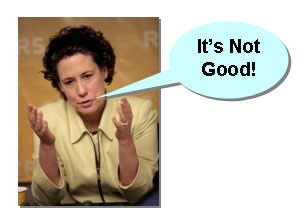Community Banks: The Next Generation
It wasn’t very fun this week listening to FDIC Director Sheila Bair give her reports on the state of the banking industry. The rising number of banks poised to fail hit the mainstream media with a vengeance, and more expensive deposit insurance is coming to your bank front door.

Yes, we’re working our way through a new Dark Ages of Banking, and the bad news has spread quickly from Wall St. and Indy Mac gunslingers to our local banks on Main Street. Like every other banking crisis, this too shall pass. However, when we finally see daylight, the world of community banking will be undergoing its most significant changes in 30 years.
Since the last banking crisis in the early 1990s, the world has changed dramatically around community banks, and it’s clear that credit issues are not the only problem today. Instead, community banks are faced with an emerging identity crisis. For this class of bank to survive 20 years from now, community bank CEOs will have to acknowledge that their age-old strategic playbook has gone stale … very stale.
In a nutshell, the traditional community bank business model has historically thrived with the following strategic identity:
- “We are at the center of our town’s business community.”
- “Our, conservative local lending knowledge allows us to maintain superior credit quality.”
- “We differentiate through our personal service that the big guys can’t match.”
- “We don’t compete on price so we generate strong loan yields and low funding costs from our core deposits.”
- “We attract experienced talent who don’t like the headaches at large banks.”
- “We’re not efficient like the big guys, but we watch expenses closely.”
- “We will build this baby up and then flip it for a nice “three times book” liquidity event!”
Unfortunately, most of these age-old assumptions are crumbling and causing community bank executives tons of grief:
- Business credit – the truth is, most community banks have done little to place themselves at the center of the business community. Instead, they’ve been transaction-focused animals in the construction and commercial real estate world. The appetite for transaction-based real estate has been more voracious for community banks under $1 billion in total assets than any other segment. Here’s proof: 10 years ago, the total construction and commercial real estate exposure of banks under $1 billion was roughly 150% of capital. By 2008, this exposure exploded to 325% of capital. During that same period, real C&I loans remained flat in their exposure at about 100% of capital or only 10% of total assets. We haven’t been “takin’ care of business,” we’ve been taken care of construction draws!
- Superior service – in the past decade, the gap between perceived service at large and small banks has narrowed substantially. The reason? Big banks have used process and technology to get more personal while small banks focused on being friendly but failed to adequately reinvent their processes. Small banks can wax poetically all day about the friendly smile, but a lightening fast online account opening with Internet chat at the ready might beat the heck out of a 40-minute, paper intensive, “root-canal”-like new account at a sleepy community bank. One need only look to the Six-Sigma injected call center and Internet experiences of Bank of America to know that the big banks are breathing down on community banks when it comes to service.
- Cost of funds – as in the past, community banks are still managing to eke out a better earning asset yield than larger banks. However, a shortage of low cost funds is probably the most critical long-term issue facing community banks. Ten years ago, banks under $1 billion ran at about 98% of the cost of funds of those over $1 billion. Now, smaller banks have run at 115% of the cost of funds of the bigger brethren. Branch consolidation has allowed large retail banks to gain more checking market share while rate spoilers abound for community banks both on the street and on the Internet.
 After the last banking crisis, there was no ING Direct offering a 3.15% money market, more than 200 bps over the stable big bank rate.With remote deposit capture, moving business liquidity from ING to a checking account is just a click and a few pennies of cost away.
After the last banking crisis, there was no ING Direct offering a 3.15% money market, more than 200 bps over the stable big bank rate.With remote deposit capture, moving business liquidity from ING to a checking account is just a click and a few pennies of cost away. - Talent – while it’s true that entrepreneurial companies will always have the opportunity to steal and motivate great talent, community banks are more and more starting to run up against plain old demographics. A huge amount of experienced bank executives and star lenders went gray long ago and are thinking more about fishing boats and golf courses than personal guarantees on term loans. While it was easy to steal experienced folks from the big banks 10 years ago, the big banks today are fraught with specialized young boys and girls who tend to be either too much sales and not enough credit or too much credit and not an ounce of relationship banking mettle. This shortage will force community banks to develop more of their own talent for the long-term – if they can find the money and time to make it happen.
- Efficiency – while community banks have continued to keep a close eye on operating costs, the regulatory environment has been far from efficient. Whether it is BSA, BCP, CIP, SOX 404 or 30 red flags, the fixed cost of operating a regulated financial institution has risen greatly, and it made it much harder to cover these fixed costs at less than $1 billion in assets.
- Liquidity event – this current firestorm of bank consolidation is likely to accelerate, but this will not be the wonderful bank-sale parties of the past. National and regional banks will be looking for buys on the cheap in this cycle, and they are more likely to pass on banks that built their pillars on construction and real estate transactions, never solidifying a true core franchise.
The Next Gen Playbook
The harsh realities mentioned above must be addressed for community banks to survive, but survive they will. I’ve been around this industry too long to believe the silly pundits who think community banks will go extinct. In the last banking crisis, I remember a McKinsey study predicting an entire industry of 10 dominant banks like in European countries. In 1998, First Union CEO Ed Crutchfield said we’d be down to 2,000 community banks by 2008. We’re actually just under 7,000. In 1999, Bank One CEO John McCoy concluded, “This is a scale business, and small banks [under $20 billion] won’t be able to compete since they won’t have access to either products or new delivery channels.” No, community banking will adapt and still be an interesting part of our industry, but not with the stale playbook. 
The next generation of community banks will be driven by these new business assumptions:
- Deep industry knowledge and niches – successful community banks will return to their roots and get excited about supporting real businesses. They will be more niched and probably specialize in certain industries.
- Loans and business services – while lending has dominated the business and power structure of community banks, the next generation players will have a more balanced focus on loans, deposits and fee-based services. Relationship managers in the future will know as much about remote deposit capture and business card services as filing a UCC on equipment.
- Technology and process “in the cloud” – the only prayer community banks have for keeping up with service and deliver innovations is to become more adept at virtual banking. That is, tapping into Web-based systems and processes provided by third parties that can match the capabilities of big players. We see this with applications like Mortgagebot, Salesforce.com and Digital Insight – albeit the success rate and speed of innovation between small banks and technology companies need to improve substantially.
- Intense industry collaborations to drive efficiency – it’s very likely that the only way for independent banks to remain economically viable is to dip more into the Ace Hardware or Good Neighbor Pharmacy model – collaborating more on how they deliver services and sharing resources with other community banks. Bank holding companies were a first attempt at this concept but most got “stuck in the middle” of efficiency and entrepreneurship and ended up consolidated into larger banks. This time around, we may see more peer collaborations in which banks stay independent but share common I.T., operations, delivery and risk management resources. Such collaborations are growing in the credit union industry for the same strategic reason.
- Industry training on steroids – with a shortage of experienced talent, it will be vital that community banks and their trade groups get more serious about standards, certification and training for community bankers. I’m not talking about a sleepy “Supervisory Skills” seminar but rather beefy credit, wealth management, payments, operations and technology training.
- Strategic liquidity events – make no mistake. There’s plenty of Franklins to be earned by building up and selling the next wave of community banks. Yet, I have a sinking suspicion that the ones with any interesting multiple will have developed more differentiated and sustainable revenues than the real-estate driven, friendly community banks of the past 15 years. Like the small innovators in the pharmaceutical, technology and consumer goods industries, the big multiples in the future are likely to go to the more creative niche players.
Since our last banking crisis in the early 1990s when the acronyms FIRREA and FDICIA were birthed, community banks have been able to benefit from lower interest rates that fueled a strong rise in real estate asset valuations and high loan demand. As big banks went through their awkward years of industry consolidation, community banks were a friendly alternative to the big bank mess, and experienced talent was ripe for the picking in our industry. Going forward, the game will be different and only those community banks drafting a new playbook during today’s Dark Ages will have a shot at attending the next gen community banking conferences a decade from now.
-sw